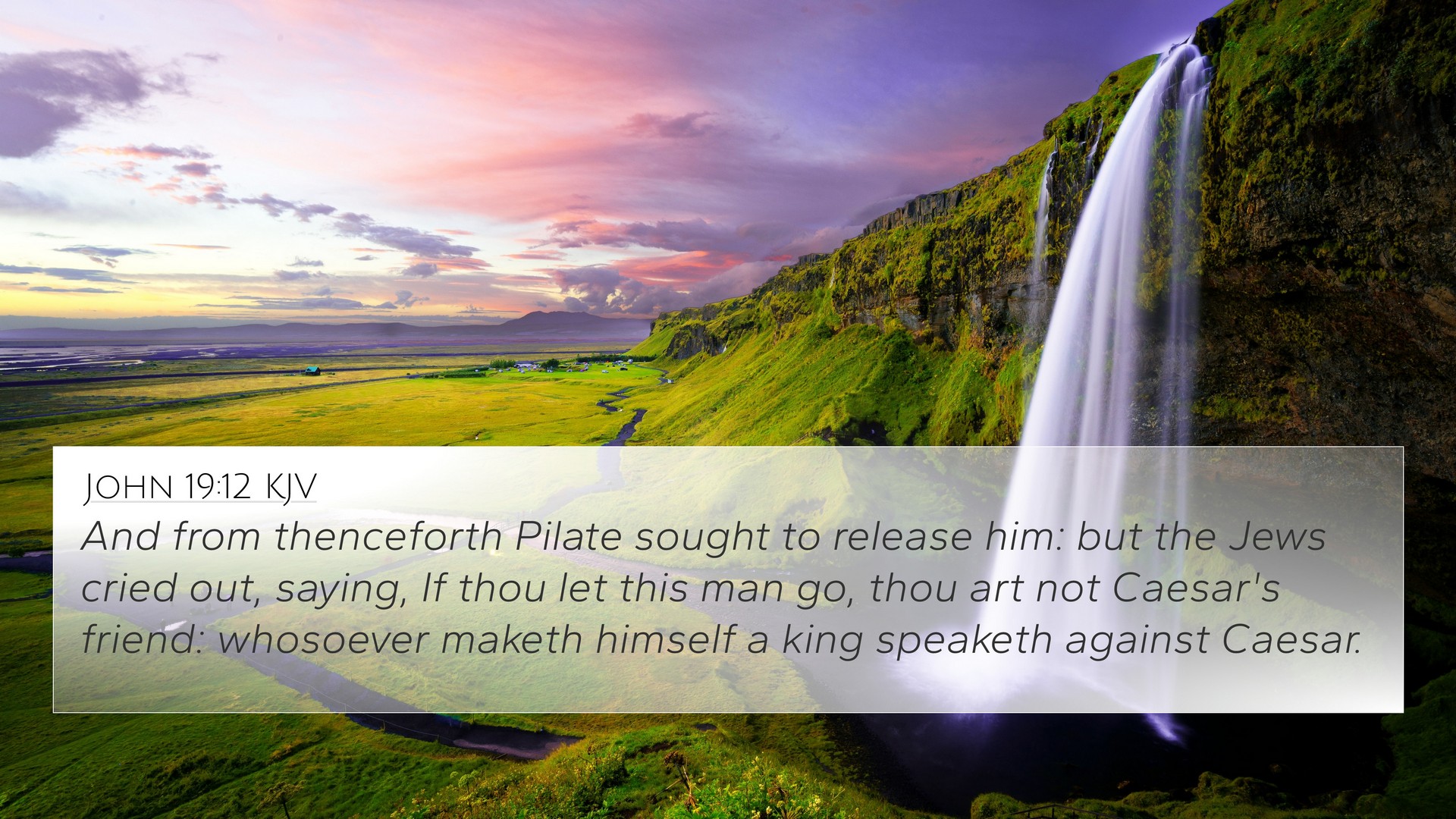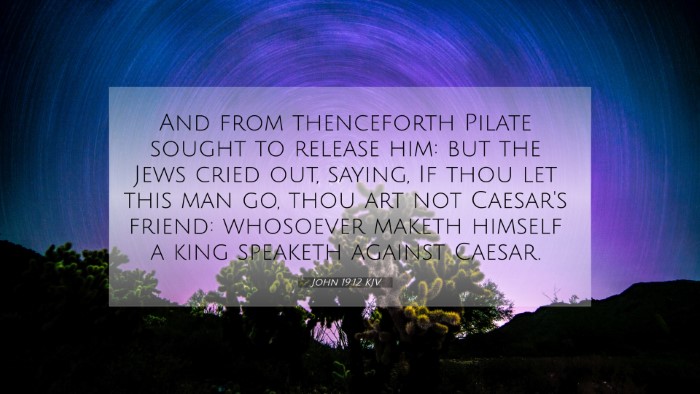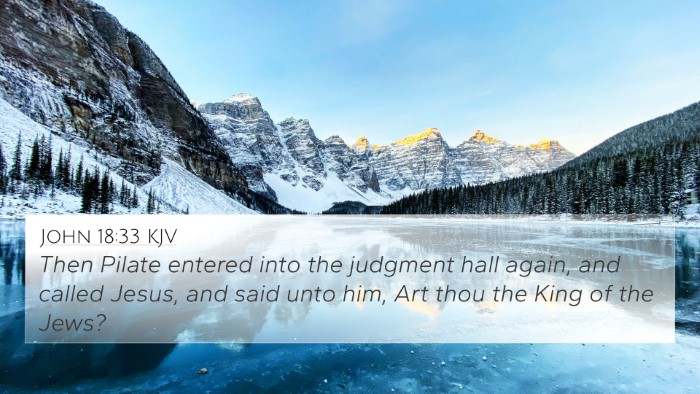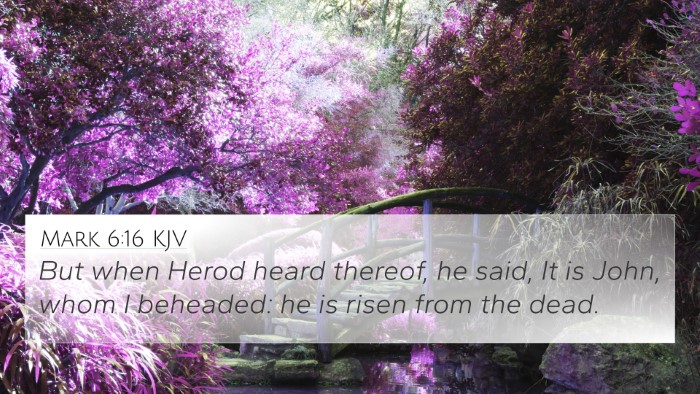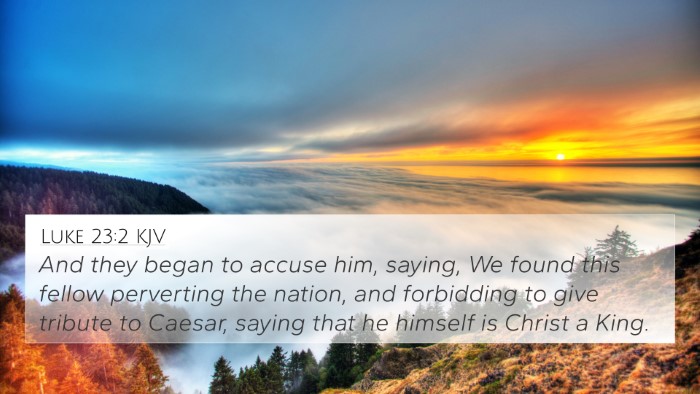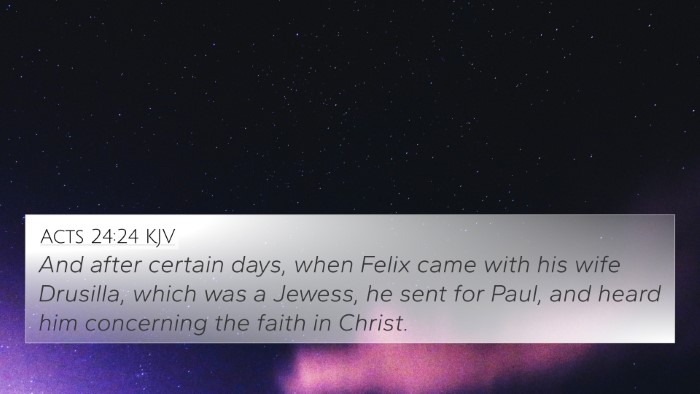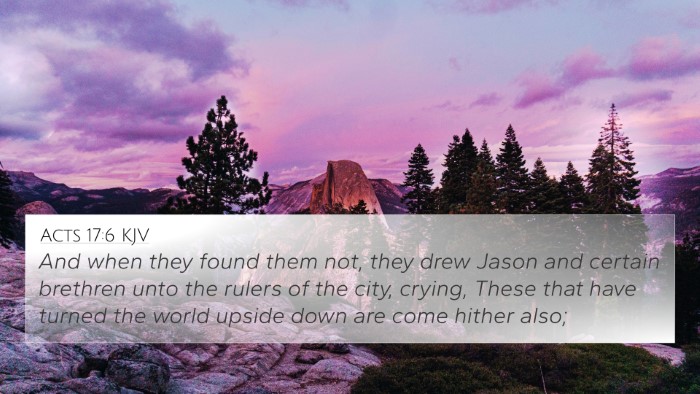Understanding John 19:12
John 19:12 captures a pivotal moment in the trial of Jesus, where the pressure culminates as
Pilate seeks to release Jesus but is met with formidable resistance from the Jewish leaders.
As we explore this verse, we can delve into various commentaries to uncover its deeper meaning
and connections to other scriptures.
Verse Context
In the broader context of John 19, Pilate is portrayed as a conflicted figure, torn between
justice and appeasing the crowd. As an illustration of political maneuvering, his role underscores
the human struggles with morality versus authority. Commentators liken Pilate’s struggle to themes
of divine sovereignty, wherein human decisions interact with God’s greater plan.
Commentary Insights
Matthew Henry
Matthew Henry notes that Pilate's attempts to release Jesus demonstrate a conflict of interest.
He highlights how the pressure from the Jewish authorities contrasts with the innocent nature of
Jesus. Henry interprets this moment as a reflection of the broader truth that righteousness may
often be overshadowed by societal demands.
Albert Barnes
Albert Barnes emphasizes the political dynamics at play, illustrating how Pilate's fear of the crowd
leads him to sacrifice justice for the sake of political expediency. Barnes sees Pilate's actions
as indicative of the moral failures that can occur when authority is abused, leading to harm against
the innocent.
Adam Clarke
Adam Clarke provides insight into the historical context of Pilate’s dilemma, noting that the
Jewish leaders wielded significant influence. Clarke points out that the insistence of the crowd
not only illustrates their hardened hearts but also aligns with the prophecy concerning the
rejection of the Messiah. Clarke’s analysis ties the events to the larger narrative of gospel fulfillment.
Bible Verse Cross References
John 19:12 can be cross-referenced with several other scriptures to illuminate its themes further:
- Matthew 27:24-26: Pilate's washing of his hands reflects his attempt to distance
himself from the guilt of Jesus' condemnation.
- Luke 23:5: The accusation against Jesus emphasizes His claim of being the King.
- John 18:40: The crowd’s choice of Barabbas over Jesus illustrates their preference for
a worldly leader over the divine.
- Isaiah 53:3: Prophetic insight into the rejection of the Messiah resonates
with the events in John 19.
- Acts 3:13-15: Peter addresses the Jews, reminding them of their choice to
reject Jesus.
- Romans 8:31: The verse underscores that if God is for us, who can be against us,
highlighting the divine narrative at play amidst human injustice.
- Hebrews 12:2: This verse reminds believers to fix their eyes on Jesus, the author
and perfecter of faith, reinforcing the divine mission even in the face of human failure.
- Matthew 21:42: Jesus refers to Himself as the cornerstone, alluding to
His rejection and its significance.
- Galatians 4:4: The fullness of time when God sent His Son presents God's timing
in the redemption story.
- Psalm 118:22: The stone the builders rejected has become the cornerstone,
illustrating the fulfillment of scripture.
Connections Between Bible Verses
By exploring the connections between John 19:12 and these referenced verses, readers can gain a
more nuanced understanding of the scripture. Each referenced verse highlights the themes of
injustice, prophecy, and divine sovereignty that permeate the crucifixion narrative.
Thematic Bible Verse Connections
The themes found in John 19:12 resonate deeply throughout scripture, unraveling larger narratives
that bridge across the Old and New Testaments.
- Injustice and the Innocent: As seen in both John 19:12 and Matthew 27:24, the theme of
the innocent suffering at the hands of the guilty is profound.
- Crowd Influence: The power of public opinion is a recurring theme, down to the choice
between Barabbas and Jesus.
- Fulfillment of Prophecy: The expressions of rejection in Isaiah and the encounters in
the Gospel narratives highlight the prophetic nature of Jesus’ life and death.
Cross-Referencing Biblical Texts
The act of cross-referencing biblical texts serves as a vital tool in understanding the interconnectedness
of scripture. Through this practice, believers can uncover deeper insights into God’s plan and purpose,
all while honing their understanding of key themes such as sacrifice, redemption, and divine justice.
Conclusion
In conclusion, John 19:12 stands as a testament to human conflict, divine prophecy, and the intricate
web of connections found within scripture. By employing relevant Biblical cross-references and
utilizing comprehensive Bible study tools, individuals can engage in a richer dialogue with the text,
encouraging deeper theological reflection and spiritual growth.
